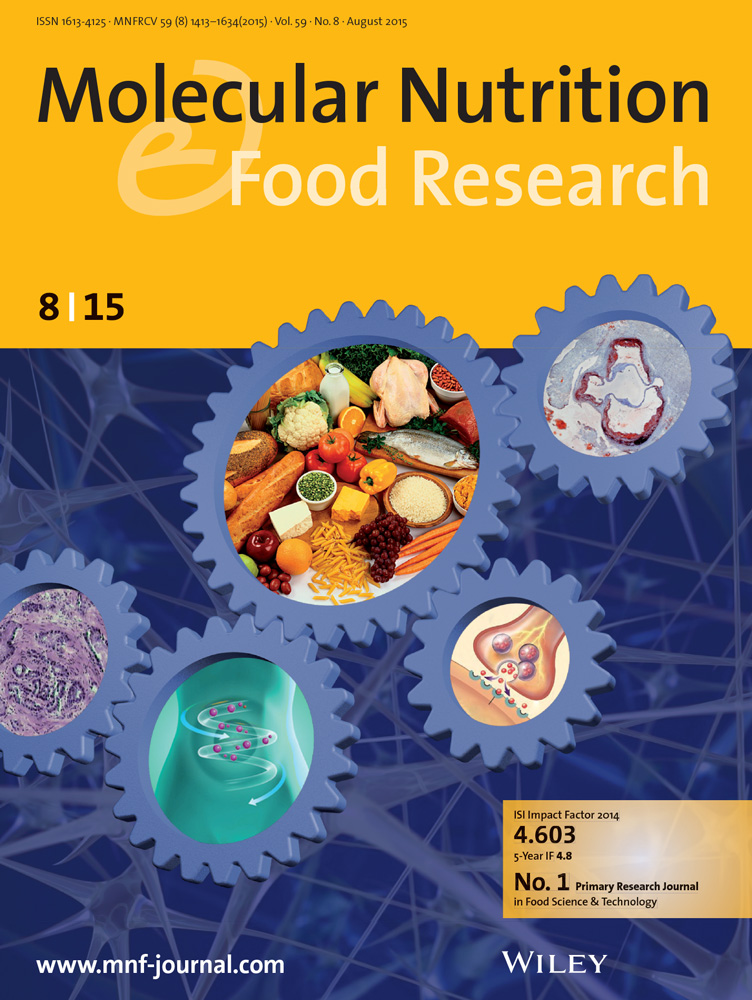Flavonoid Polyphenols as Therapeutic Agents for Fatty Liver Disease: Mechanisms, Microbiome Interactions, and Metabolic Insights.
IF 4.5
2区 农林科学
Q1 FOOD SCIENCE & TECHNOLOGY
引用次数: 0
Abstract
Fatty liver disease (FLD), encompassing non-alcoholic fatty liver disease (NAFLD) and alcoholic fatty liver disease (AFLD), has become a major global health concern, primarily driven by unhealthy diets and lifestyle changes. Recently, flavonoids, which account for approximately 60% of polyphenolic compounds, have garnered attention for their antioxidant, anti-inflammatory, and immunomodulatory properties in combating metabolic diseases. This review summarizes recent advancements in the therapeutic potential of flavonoid polyphenols for treating FLD, with a focus on their bioactivity and mechanisms of action, interactions with the gut microbiome, and metabolic effects. The review discusses the bioactivity and biomarkers of flavonoids in treating FLD, their similar and differing roles in NAFLD and AFLD, regulation of gut microbiota, and synergistic mechanisms with other polyphenolic compounds. This review provides insights into the potential applications of flavonoids in treating fatty liver disease and suggests future research directions.类黄酮多酚作为脂肪性肝病的治疗剂:机制、微生物组相互作用和代谢见解。
脂肪性肝病(FLD),包括非酒精性脂肪性肝病(NAFLD)和酒精性脂肪性肝病(AFLD),已成为一个主要的全球健康问题,主要是由不健康的饮食和生活方式的改变引起的。近年来,占多酚类化合物约60%的黄酮类化合物因其抗氧化、抗炎和抗代谢疾病的免疫调节特性而受到关注。本文综述了近年来类黄酮多酚治疗FLD的研究进展,重点介绍了其生物活性和作用机制、与肠道微生物群的相互作用以及代谢作用。本文综述了黄酮类化合物在NAFLD和AFLD治疗中的生物活性和生物标志物、它们在NAFLD和AFLD中的异同作用、对肠道菌群的调节以及与其他多酚类化合物的协同作用机制。本文综述了黄酮类化合物在脂肪肝治疗中的潜在应用,并提出了今后的研究方向。
本文章由计算机程序翻译,如有差异,请以英文原文为准。
求助全文
约1分钟内获得全文
求助全文
来源期刊

Molecular Nutrition & Food Research
工程技术-食品科技
CiteScore
8.70
自引率
1.90%
发文量
250
审稿时长
1.7 months
期刊介绍:
Molecular Nutrition & Food Research is a primary research journal devoted to health, safety and all aspects of molecular nutrition such as nutritional biochemistry, nutrigenomics and metabolomics aiming to link the information arising from related disciplines:
Bioactivity: Nutritional and medical effects of food constituents including bioavailability and kinetics.
Immunology: Understanding the interactions of food and the immune system.
Microbiology: Food spoilage, food pathogens, chemical and physical approaches of fermented foods and novel microbial processes.
Chemistry: Isolation and analysis of bioactive food ingredients while considering environmental aspects.
 求助内容:
求助内容: 应助结果提醒方式:
应助结果提醒方式:


